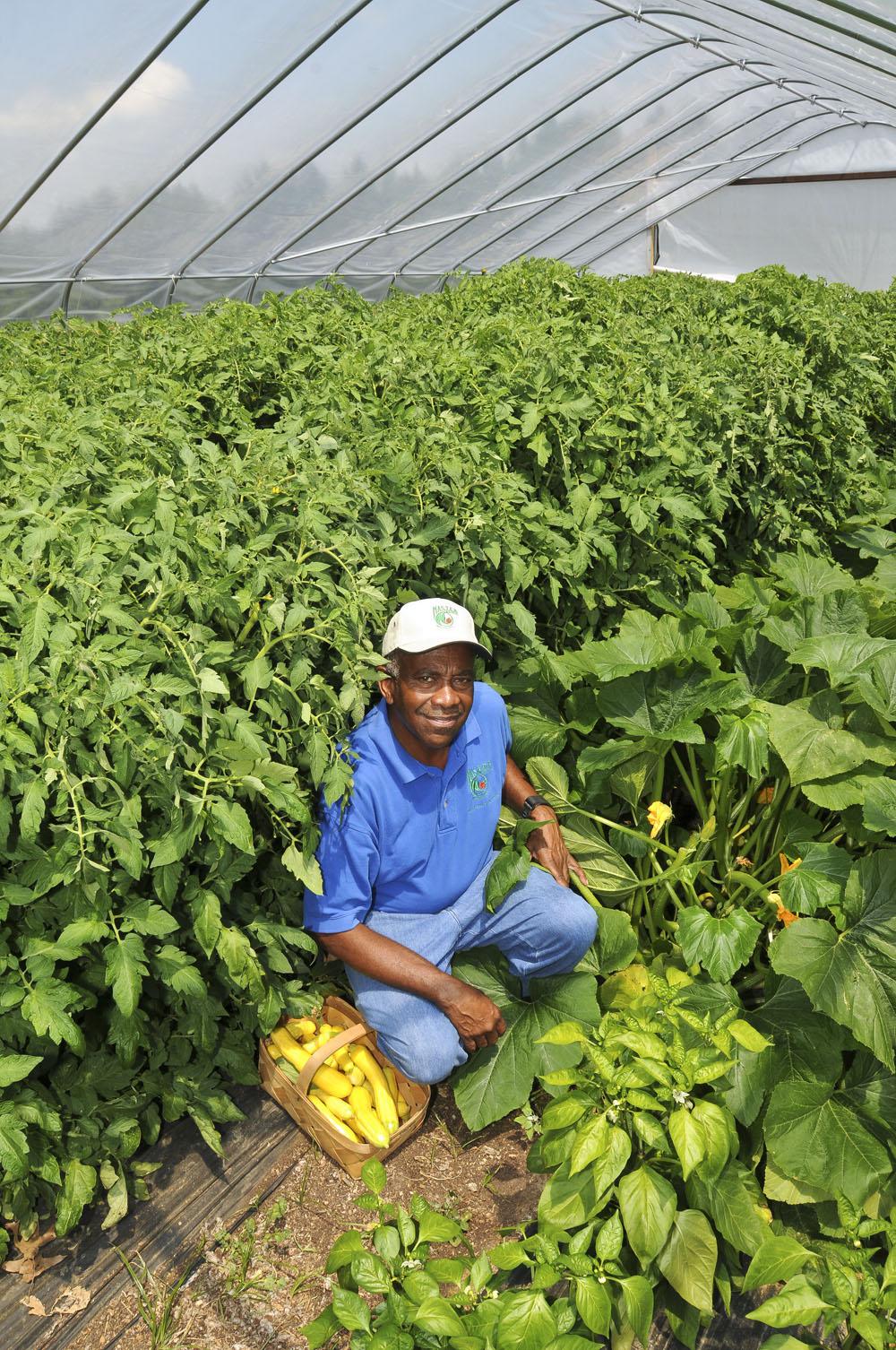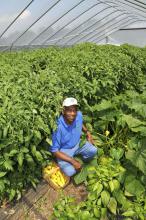Information Possibly Outdated
The information presented on this page was originally released on May 12, 2011. It may not be outdated, but please search our site for more current information. If you plan to quote or reference this information in a publication, please check with the Extension specialist or author before proceeding.
Extended season gives grower an edge
MISSISSIPPI STATE – The growing season is blooming early for William Tucker, a fruit and vegetable producer participating in a grant-funded research program studying high tunnel use.
High tunnels, also called “hoop houses,” are unheated greenhouses that allow producers to extend the growing season. These structures insulate plants from cooler spring and fall temperatures by trapping warmer air inside a frame structure covered in plastic sheeting.
Susan McGukin, program associate for the Mississippi State University Extension Service in Lee County, received information on a U.S. Department of Agriculture program that assists with funding for high tunnels, and she immediately contacted Tucker.
“William is one of Lee County’s Master Gardeners, and he was already growing produce and flowers for our local farmer’s market,” McGukin said. “He’d recently retired and was hoping to expand his operation. The timing was perfect.”
Tucker had been studying high tunnels for about 3 years and met the prerequisites for participation in the grant project.
“I take part in Extension’s Master Gardener program because I learn valuable information on improving my garden,” Tucker said. “I’ve received information through workshops, printed information and from my fellow Master Gardeners. I was very excited about this grant and thought I could learn a lot from this project.”
Tucker and three of his friends built the high tunnel in October 2010. After the structure was completed, Tucker prepared the soil, built the rows and installed an irrigation system.
“I wanted to make sure I had everything I needed to be as successful as possible the first year,” Tucker said.
This included deciding what to plant. He turned to his clients for input.
“I selected tomatoes and cut flowers because of their early demand from my returning customers,” Tucker said. “In the tunnel, I have between 180 and 200 tomato plants, and they’re almost head-high now. I have about 30 squash plants, 20 bell pepper plants, one row of sunflowers and one row of zinnias for cut flowers.”
Using the high tunnel will expand Tucker’s early and late growing seasons by 4 to 6 weeks each and improve crop quality.
“I’ve learned that being able to protect my produce from the wind and rain has been good for my productivity,” Tucker said. “I really think that over time I can perfect the amount of water and sunshine that I need to balance for the greatest productivity.”
As part of the 3-year grant project, Tucker is tracking his costs.
“Other countries have used high tunnels, and the USDA is now trying to determine if this is financially feasible for our country’s farmers,” Tucker said. “At the end of the season, I’ll compare my costs and profits and provide that information to the USDA.”
The high tunnel and the publicity it has received have made Tucker a local celebrity.
“I’ve been shocked by the amount of interest from strangers,” Tucker said. “I’ve almost had to hire my three grandchildren to give tours. My grandson, William Tucker Young, is quite proud of the tunnel and enjoys working with me at the farmer’s market. I count it a great joy to be a good steward of the land.”







